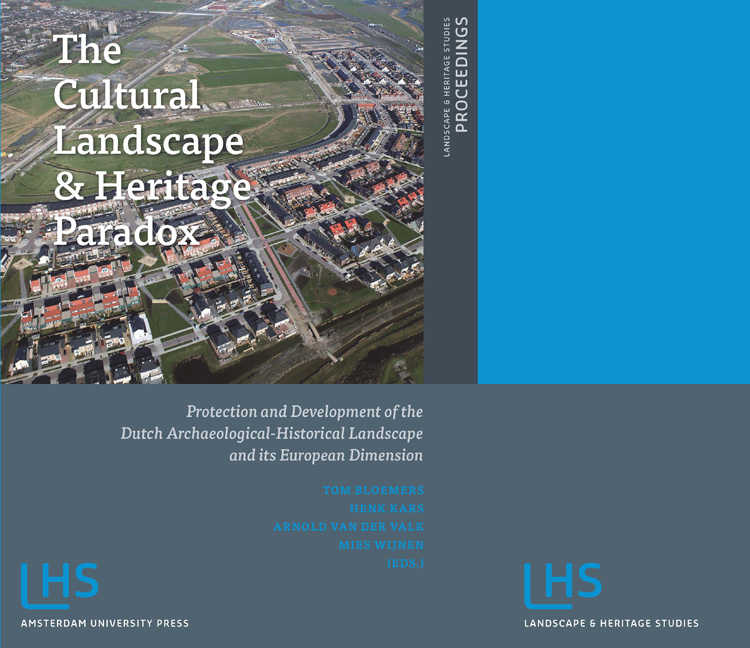 The Cultural Landscape and Heritage Paradox
The Cultural Landscape and Heritage Paradox Book contents
- Frontmatter
- Contents
- Preface
- I INTRODUCTION
- II INSIGHTS AND PROSPECTS OF ARCHAEOLOGICAL-HISTORICAL LANDSCAPE STUDIES
- III LINKING KNOWLEDGE AND ACTION
- IV IMAGINATION - FACTS AND CONSTRUCTIONS
- V SHARING KNOWLEDGE - STORIES, MAPS AND DESIGN
- VI SYNTHESIS AND CONCLUSIONS
- VII MANAGEMENT OF KNOWLEDGE
- VIII AGENDA FOR THE FUTURE
- IX SUMMARY
- X APPENDIX
- Subject Index
- Index of Places and Regions
7 - The ancient Quarry and Mining District between the Eifel and the Rhine: aims and Progress of the Vulkanpark Osteifel Project
Published online by Cambridge University Press: 21 January 2021
- Frontmatter
- Contents
- Preface
- I INTRODUCTION
- II INSIGHTS AND PROSPECTS OF ARCHAEOLOGICAL-HISTORICAL LANDSCAPE STUDIES
- III LINKING KNOWLEDGE AND ACTION
- IV IMAGINATION - FACTS AND CONSTRUCTIONS
- V SHARING KNOWLEDGE - STORIES, MAPS AND DESIGN
- VI SYNTHESIS AND CONCLUSIONS
- VII MANAGEMENT OF KNOWLEDGE
- VIII AGENDA FOR THE FUTURE
- IX SUMMARY
- X APPENDIX
- Subject Index
- Index of Places and Regions
Summary
ABSTRACT
The landscape of the Osteifel between the towns of Andernach and Mayen in the north of Rheinland- Pfalz, Germany, is characterized by quaternary volcanism. In the course of the eruptions valuable raw materials were produced, including basalt lava, tuffstone and pumice. People first used the volcanic resources in prehistoric times. One of the most extensive mining districts north of the Alps in the ancient world developed here during the Roman period. Millstones of basalt lava and building material of tuff were extensively traded over many centuries into large parts of Europe.
Quarrying, which has been carried out up to the present day, is a great burden on the landscape of the Osteifel but at the same time it provides opportunities. Thus, thanks to enormous mining profiles, deep geological windows have developed which allow a detailed view into the history of the earth. At the same time, previously unknown ancient quarries and mines have been located in the last 150 years by means of modern mining techniques. Brought to light by the mining, the sites could, at least for a short time, be examined without danger.
The importance of the unique geological and archaeological heritage of the region led to the idea of Vulkanpark Osteifel. Founded in 1996, the project follows a dual aim, scientific research on the one hand and economic strengthening through tourism on the other. To realize this goal, a GmbH (Limited Company) was founded whose shareholders are the district council of Mayen-Koblenz and the Romisch- Germanisches Zentralmuseum in Mainz, an international research institute for archaeology. Today, more than 20 monuments and three information centres have been established.
With the implementation of the Vulkanpark, the legacy of the stone industry has for the first time been considered as a cultural heritage worthy of protection.
KEY WORDS
Volcanology; archaeology; stone industry; ancient quarrying; cultural landscape; Vulkanpark; mining
INTRODUCTION
One of the largest mining areas for mineral resources in the ancient world was to be found in the north of Rheinland-Pfalz, Germany, between Andernach on the Rhine and Mayen on the border of the Eifel, in use in Roman times and the Middle Ages (Fig. 1). Millstones of basalt lava, blocks made from tuff and clay crockery were absolute top export goods for hundreds of years. These were then transported on the Rhine to customers in Switzerland, Britain and Scandinavia.
- Type
- Chapter
- Information
- The Cultural Landscape and Heritage ParadoxProtection and Development of the Dutch Archaeological-Historical Landscape and its European Dimension, pp. 177 - 186Publisher: Amsterdam University PressPrint publication year: 2010
- 1
- Cited by


